5 Composite Decking Lighting Ideas
Our composite decking looks great in any setting, but you can really make your outdoor spaces shine with our decking
Products in Stock
Lowest Prices
Express Delivery
10-Year Warranty
Early April Sale. Up To 15% Off.
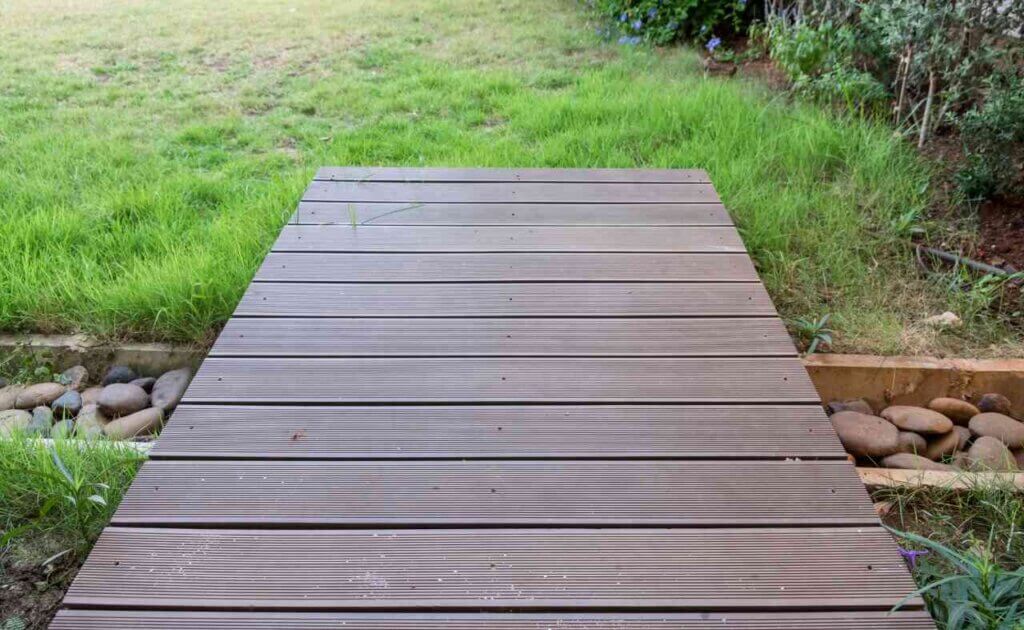
The best decking material is a tough subject and can be down to personal choice. However, choosing the right decking material can make or break your outdoor space. But before you start thinking about what would look good in your garden, you need to consider the different types of decking on offer and understand their properties.
Ideally, you want a type of decking that can handle the elements, lasts for years, and maybe even makes your neighbours a little jealous. With so many options out there, it’s easy to feel overwhelmed, so let’s break down the top contenders and figure out which is the best decking material for you.
| Comparison | Composite Decking | Pressure-Treated Wood |
Tropical Hardwoods |
Cedar | Redwood | PVC |
|---|---|---|---|---|---|---|
| Longevity | High | Medium | Low | Medium | High | High |
| Maintenance Level | Low | Medium | Medium | High | Medium | Low |
| Durability | High | High | High | Medium | High | High |
| Weather Resistance | High | High | Medium | Medium | Medium | High |
| Eco-friendly | High | Low | Medium | Medium | Medium | Medium |
| Lifetime Value | High | Medium | Medium | Medium | Medium | High |
Building a new deck or giving your old one a makeover? First things first, you need to get to know the different types of decking materials out there. Each one has its own personality, from natural charm to low-maintenance ease. Let’s take a closer look at some popular options and what makes them tick.
Composite decking has become a bit of a superstar lately, and for good reason. It’s tough as nails, fade-resistant, stain-resistant, and more. Made from a mix of recycled plastic and wood fibres, it gives you the look of real wood without all the fuss. Plus, it comes in a wide variety of colours and textures, so you can create a deck that’s uniquely you. And if you’re looking for something top-notch, check out our best selling composite decking costing £23.99 per 4 metres, or order a free sample via our website.
Pros:
Cons:
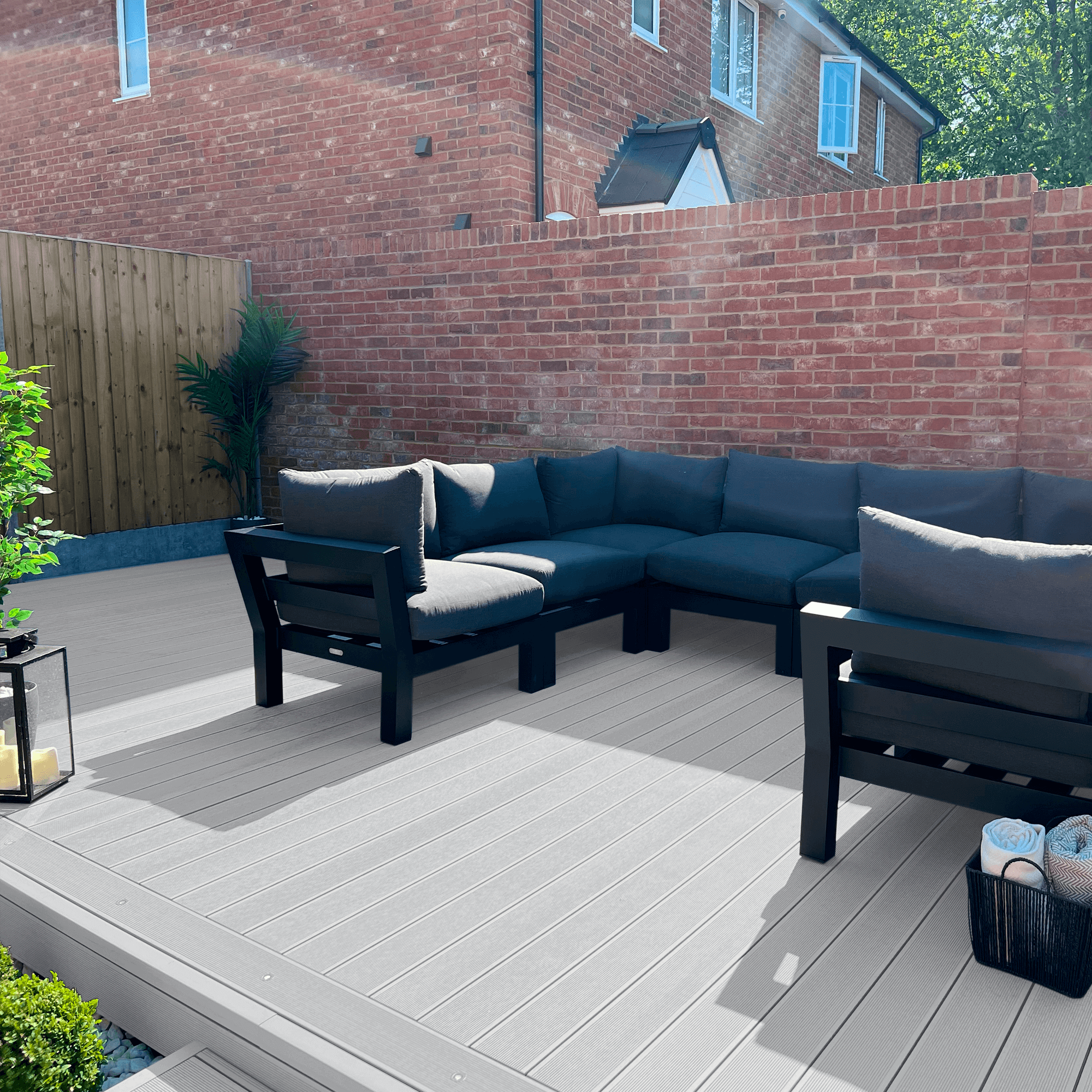
Pressure-treated wood, usually Southern Yellow Pine, is a wallet-friendly option that’s strong and rot-resistant. It’s been treated with preservatives to help it last, but it does need some TLC. Regular sealing and staining are a must to keep it looking its best.
The types of wood on offer are endless, with both softwood and hardwood available. It’s a case of deciding which one would complement your garden more as both have their benefits and drawbacks. Read more about composite vs wood decking for more information.
Pros:
Cons:
Tropical hardwoods like Ipe and Cumaru are the heavyweights of the decking world. This type of decking material laughs in the face of rot, insects, and decay. They’re perfect for high-traffic areas or if you live somewhere with unpredictable weather. Their rich, warm colours add a touch of luxury, but they do come with a heftier price tag.
Pros:
Cons:
Cedar is naturally resistant to rot and insects, and it smells amazing. Its natural oils offer some protection, but you’ll still need to keep up with maintenance to keep it looking fresh. Cedar is known for its reddish hues and unique grain patterns.
Pros:
Cons:
This type of decking material is all about low maintenance, and it’s made entirely from plastic so it won’t fade, stain, scratch, or become a bug buffet. PVC decking comes in a range of colours and textures, and all it really needs is a quick clean every now and then.
Pros:
Cons:
Why not pair your composite decking with some balustrade? Read More: 7 Decking Balustrade Ideas
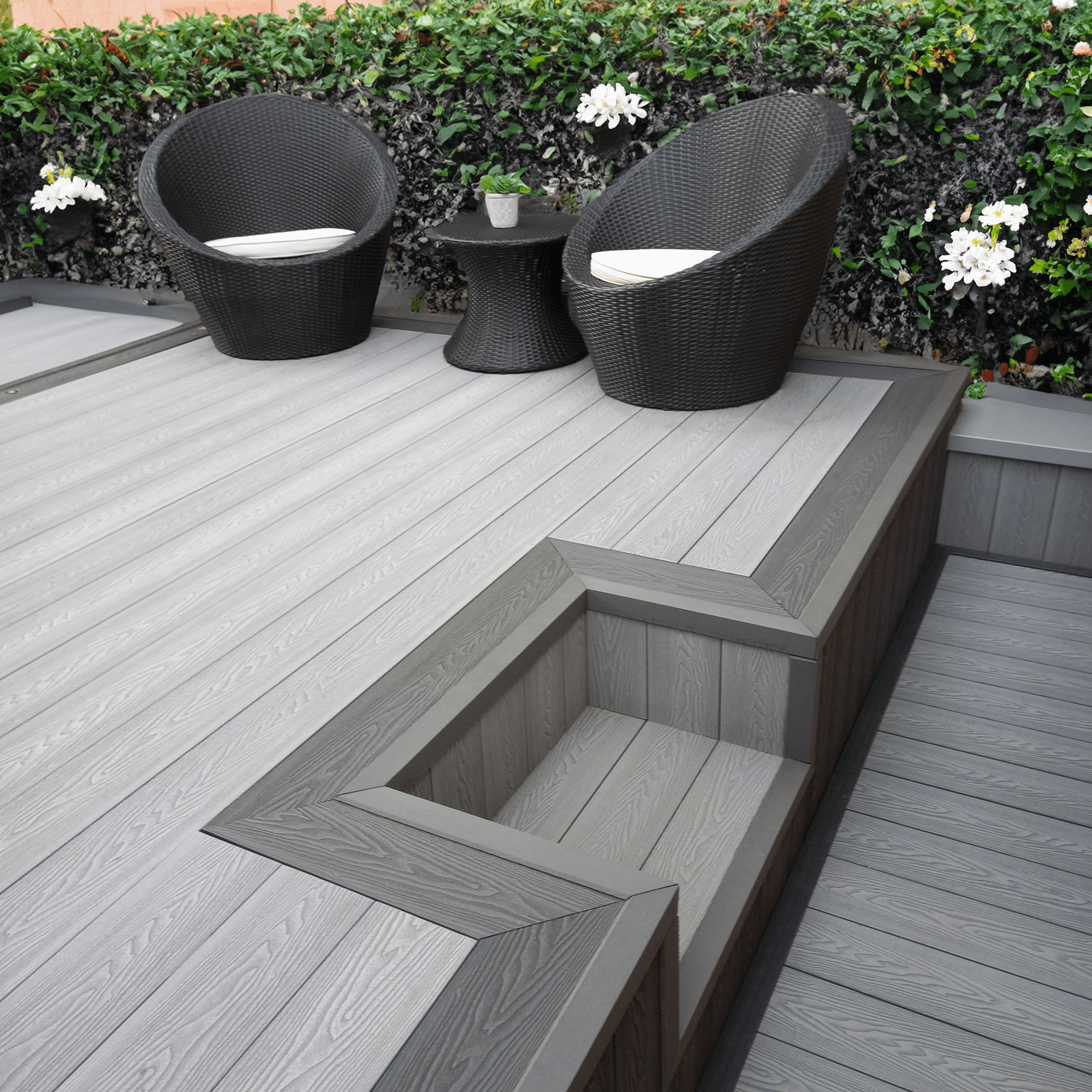
Think about how long you want your deck to last and what it’ll have to endure. Will it be a party central or a quiet retreat? Decking materials like composite decking and tropical hardwoods are built to last.
How much time do you want to spend on upkeep? Composite and PVC decking are pretty much set-it-and-forget-it, while wood decking needs regular cleaning, sealing, and staining. If you’ve like to learn more about composite decking maintenance, read more in our guide.
The type of decking you choose can really change the vibe of your garden. Ask yourself what vibe you’re going for and choose your decking based on the answer. Maybe you love the natural look of wood or but also prefer something sleek and modern? The best decking material will always be the one that complements your home and personal style.
Let’s be real, budget matters and the cost can vary based on the type of decking you order. Compare the costs of different materials, and don’t forget to factor in long-term maintenance expenses. Explore the costs of composite decking here.
If you’re eco-conscious, look for materials with a smaller carbon footprint. Options that are made from recycled material such as composite decking are often the best as they have a very minimal impact on the environment. Here’s everything you need to know about sustainability and composite decking.
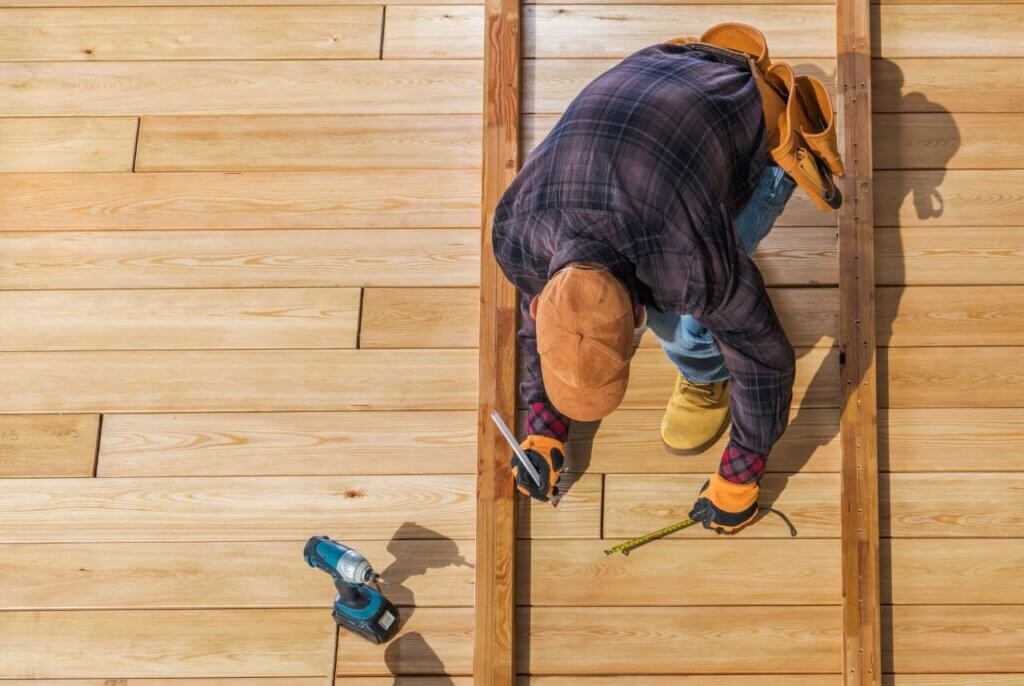
Before you start hammering away, make sure you have a solid plan and any necessary permits. Prep the ground properly – it needs to be level and stable.
Pick fasteners that work with your decking material and, most importantly, won’t rust.
Leave enough space between boards and create a slight slope so water can drain away. No one wants a swampy or mouldy deck.
Each material has its own quirks, so follow the manufacturer’s instructions to the letter. For more information, read our full decking installation guide to learn more.
Sweep away any leaves and debris regularly, and give your deck a good scrub every now and then with a mild cleaner and water. Skip the harsh chemicals and use a product that is environmentally-friendly such as our composite decking cleaner.
Keep an eye out for any signs of wear and tear, like loose boards or cracks. Fix them as soon as possible to prevent bigger problems down the road.
If you go with wood decking, sealing and staining are your best friends. They’ll protect the wood from the elements and keep it looking fresh.
Make sure water isn’t pooling on your deck. If it is, adjust the slope or add drainage solutions to prevent damage.
Consider using furniture pads to prevent scratches, and avoid dragging heavy objects across the deck.
All in all, choosing the right decking material is a big decision, especially when there are so many different types of decking on the market. But this decision doesn’t have to be a stressful one. Simply weigh up your options, consider your priorities, and don’t be afraid to ask for help. With a little planning, you’ll be enjoying your beautiful deck in no time.
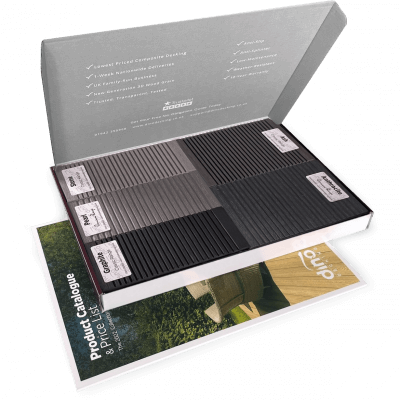
Our sample pack contains a sample piece of each colour currently available. Order your free sample pack today to compare the colours and get a true feeling of the Dino Decking range!
Our composite decking looks great in any setting, but you can really make your outdoor spaces shine with our decking
If the idea of having rats under your decking makes you shiver, don’t worry. We’ll let you know the signs
Business hours
Monday: 09:00 – 17:30
Tuesday: 09:00 – 17:30
Wednesday: 09:00 – 17:30
Thursday: 09:00 – 17:30
Friday: 09:00 – 17:30
Saturday: Closed
Sunday: Closed
Contact us
01942 355968
support@dino.co.uk
Collection Address: Unit 1 Wetheral Close Hindley Ind Estate Wigan Greater Manchester North West WN2 4HS
Pages
Products
Testing
Copyright 2025 Dino Decking Ltd All Rights Reserved.
VAT Number: GB296097848.
Company Number: 10837233.